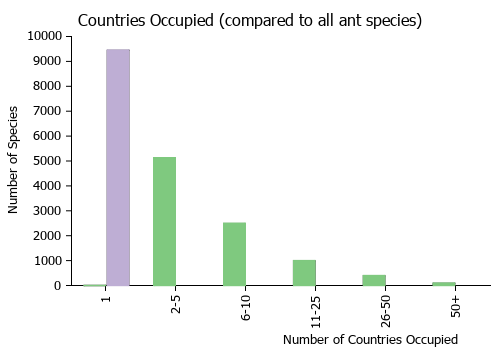Nylanderia polita
| Nylanderia polita | |
|---|---|
| Scientific classification | |
| Kingdom: | Animalia |
| Phylum: | Arthropoda |
| Class: | Insecta |
| Order: | Hymenoptera |
| Family: | Formicidae |
| Subfamily: | Formicinae |
| Tribe: | Lasiini |
| Genus: | Nylanderia |
| Species: | N. polita |
| Binomial name | |
| Nylanderia polita Williams, Williams, LaPolla & Lucky, 2025 | |
Photo Gallery
Identification
Antennae relatively short, with scapes surpassing posterior margin of head by about a third of their length; medium to dark brown with antennae, mandibles, leg joints, and tarsi yellow in contrast to body; meso-and metacoxae somewhat lighter than mesosoma; entire cuticle smooth and shiny, with microsculpture, and completely lacking blue iridescence; dense cephalic pubescence; posterior margin of head with little to no emargination.
Nylanderia polita workers most strongly resemble those of Nylanderia austroccidua and Nylanderia contraria but are easily separable from the latter two by their overall smooth cuticle with no microsculpture and complete lack of blue iridescence. Unlike N. austroccidua, this species has an evenly rounded propodeum with the posterior face about as long as the dorsal face in profile view. Unlike N. contraria, the meso- and metacoxae of N. polita are never whitish and at most only somewhat lighter in color than the mesosoma.
Compare with: Nylanderia austroccidua, Nylanderia contraria.
Keys including this Species
Distribution
The known range of this species is limited only to high elevation forests in Veracruz, Mexico (Fig. 2B).
 Williams et al. (2025), Fig. 2. Distributions of species: (A) N. austroccidua in the United States and northern Mexico, (B) species found across southern Mexico and Mesoamerica, and (C) N. docilis in South America. Maps were created using GPS coordinates listed in Table S1 and from the Global Ant Biodiversity Informatics (GABI; Guénard et al. 2017) database.
Williams et al. (2025), Fig. 2. Distributions of species: (A) N. austroccidua in the United States and northern Mexico, (B) species found across southern Mexico and Mesoamerica, and (C) N. docilis in South America. Maps were created using GPS coordinates listed in Table S1 and from the Global Ant Biodiversity Informatics (GABI; Guénard et al. 2017) database.
Latitudinal Distribution Pattern
Latitudinal Range: 19.5° to 19.2°.
| North Temperate |
North Subtropical |
Tropical | South Subtropical |
South Temperate |
- Source: Williams et al., 2025
Distribution based on Regional Taxon Lists
Neotropical Region: Mexico (type locality).
Distribution based on AntMaps
Distribution based on AntWeb specimens
Check data from AntWeb
Countries Occupied
| Number of countries occupied by this species based on AntWiki Regional Taxon Lists. In general, fewer countries occupied indicates a narrower range, while more countries indicates a more widespread species. |

|
Estimated Abundance
| Relative abundance based on number of AntMaps records per species (this species within the purple bar). Fewer records (to the left) indicates a less abundant/encountered species while more records (to the right) indicates more abundant/encountered species. |

|
Biology
Castes
Nomenclature
The following information is derived from Barry Bolton's Online Catalogue of the Ants of the World.
- polita. Nylanderia polita Williams et al., 2025: 582, figs. 57-61 (w.q.) MEXICO (Veracruz).
Type Material
- Holotype worker, MEXICO: Veracruz, 8km WSW of Xalapa, 19.52081 -96.9917 ±20m, elev. 1530m, cloud forest, leaf litter (MiniWinkler), 22.vi.2016, ADMAC#Wa-F-05-1-41 (USNM: USNMENT01131180).
- 4 paratype workers with same locality data as holotype (USNM: USNMENT01131313, USNMENT01131314; MNCR: USNMENT01131315, USNMENT01131316). 1 paratype queen, MeXICO: Veracruz, 8km WSW of Xalapa, 19.52283 -96.99102 ±20m, elev. 1500m, cloud forest, leaf litter (MiniWinkler), 22.vi.2016, ADMAC#Wa-F-05-2-31 (USNM: USNMENT01131789).

